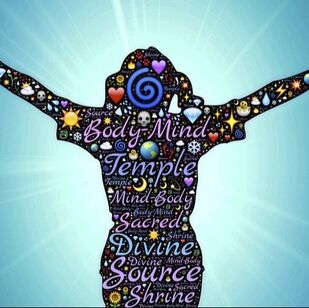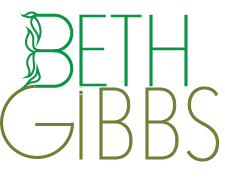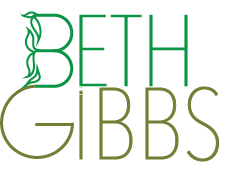ENLIGHTEN UP! a blogSelf-awareness stories: lighting our way to clarity, contentment and resilience in a complicated world.
|
 In my last post, I explored Steps 5 & 6: Wisdom. In this post, I talk about step 7, find your bliss, step 8, connect to your bliss, and step 9, bring bliss into your daily life. The Taittiriya Upanishad, the philosophical and spiritual source of this contemporary view of self-awareness has this to say about Self: “When one realizes the Self, in whom All life is one, changeless, nameless, formless, Then one fears no more. Unless we realize The Unity of Life, we live in fear." —The Upanishads, translation by Eknath Easwaran Because one’s connection to that something larger than our material senses and our personality (including our ego) is so personal, varied and individual, this post will focus on sensing the Self through those times and places when even for a brief moment, feelings of total connection point our way to The Unity of Life. In other words, we can think of bliss as a pointer, a hint, a key or a trail blaze pointing us toward the Self. To understand bliss as a pointer toward something larger than ourselves, we can consider answers to the following questions. What is Bliss? We have a bliss experience when time loses its linear flow, and space expands to encompass everything as our sense of self as physical and solid seems to disappear. One way to view these bliss moments, fleeting though they often are, is to think about moments when we feel transported out of ourselves; when our thinking mind, ego, personality and sense of self come to a standstill. The first time I experienced this was during a family vacation in Maine. I was twelve years old. We were hiking with friends on Mt. Megunticook. It was my first hike and it was a steep trail. I don’t remember what I was thinking as we went up the mountain, but when we got to the top and looked out over the inspiring landscape; I was in awe and lost all sense of time, space and my twelve-year old ego-I. I was completely absorbed in the moment. It took my breath away. I have never forgotten it. We don’t stay in the bliss state. We take mini-vacations there. However, getting there even for a few brief moments is enough to let us know that ‘there’ exists. And while we may accept and believe this intellectually, it is only when we get an up-close and personal glimpse of bliss that we know it is true. Sometimes, we can encourage the bliss state through our decisions, efforts, and choices. At other times “shift happens” and bliss appears unexpectedly out of nowhere. In either case, it is important to understand that we cannot control its appearance or the experience of it. It’s enough to know that it exists and to appreciate it after it occurs. We say, ‘after it occurs,’ because we will not know we are in it, while we are in it. When it ends, we may find ourselves saying, “Wow! That was amazing! Where is Bliss? That’s a bit easier to answer. Bliss is everywhere. It’s in us, around us, in front of us, behind us, above us, below us, to the left of us, to the right of us, and it interpenetrates every aspect of our being. It is everywhere, and everywhen, waiting for us to open to and receive it as a result of our efforts or of grace. Here is a story that illustrates this. I’ve contemporized it a bit but the essence is true to the original from Meditation and its Methods, by Swami Vivekananda. Birds of a Feather Two birds of golden plumage sat on the same tree. The one above, serene, majestic and absorbed in bliss; the one below restless and eating the fruits of the tree, now sweet, now bitter. After eating an exceptionally bitter fruit, this bird looked up at the majestic blissful bird and went back to eating the sweet and bitter fruits. Again, the restless bird looked at the upper bird, hopped up on a higher branch, and continued to eat the fruits of the tree. This eating and hopping upward happened many times until the lower bird reached the upper bird, lost itself in bliss, and realized all at once that the two had never been separate at all. How Do We Experience Bliss? Bliss states wait patiently for us when our feelings of being separate, imbalanced, confused, and distracted have been calmed, stilled, and transformed. If we pay attention we may find ourselves experiencing bliss as contentment and joy when we spend time in nature, pursue a hobby, enjoy art, music, writing or other creative activity as artist or audience, or as a volunteer to help others. Bliss is also related to the search for meaning; how we choose our personal values, how we find meaningful work, how we spend our time, and what helps us feel grateful, comfortable in our own skin and enables us to express our full authentic selves. It’s what Friedrich Nietzsche was referring to when he wrote, “He who has a why to live for can bear almost any how.” What Do We Do After We Experience Bliss? What happens in our lives may remain the same but what can change after a bliss experience is our attitude toward our life, how we live it, how we manage ourselves, and how we treat others. We can experience deep self-awareness on all levels. This increases our ability to be fully present ‘in the moment.’ To deepen our understanding of bliss and take the first steps to find and experience it, we turn to steps seven, eight, and nine of The Nine Steps to Self-Awareness. Step 7. Find Your Bliss. Questions to consider:
Step 8. Connect to Your Bliss. Questions to consider:
Step 9. Bring Bliss into Your Daily Life. Work to do:
Experiences of bliss that visit us are wonderful. If they come with grace, we can accept and appreciate them. We can also court them. Try a guided relaxation. You can read more about it here. At the end of the blog post you will find a video with a guided relaxation to try. If you sign up for my newsletter on my home page you’ll be able to download two tracks from my “Release, Relax and Let Go" Mp3. I hope you have picked up a few ideas from this series. If you would like a deeper discussion of the Nine Steps to Self-Awareness, you will find it in my book: Enlighten Up! Finding Clarity, Contentment and Resilience in a Complicated World. More info, a trailer and links here.
0 Comments
|
Archives
July 2024
AuthorBETH GIBBS started her yoga practice in 1968, four months after her son was born and she’s been practicing ever since. She currently teaches all levels therapeutic yoga classes for adults, and specialty classes for seniors in the Hartford, Connecticut area. Beth is a certified yoga therapist through the International Association of Yoga Therapists and is guest faculty at the Kripalu School of Integrative Yoga Therapy. She writes for the blogs, Yoga for Healthy Aging, and Accessible Yoga. Her master’s degree from Lesley University in Cambridge, MA is in Yoga Therapy and Mind/Body Health. Categories |
|
|
Enlighten Up! a Blog
|
Copyright © 2023 Beth Gibbs

 RSS Feed
RSS Feed
